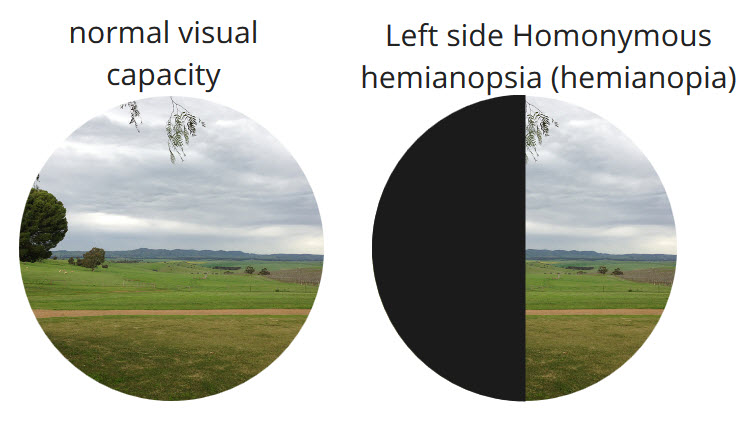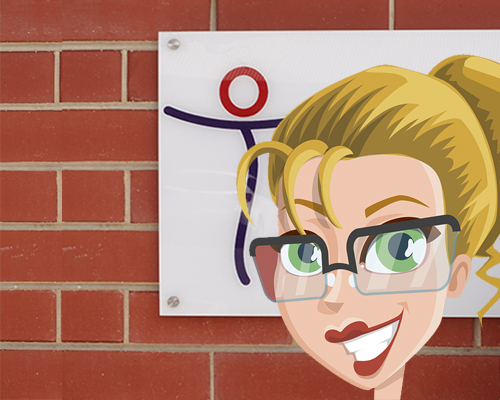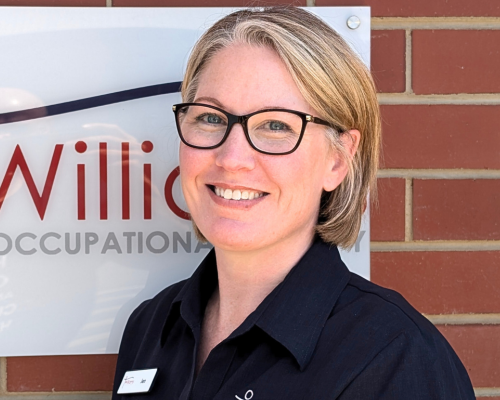My personal returning to drive story started way back on Christmas Day 2014.
I awoke to find my left side numb with little movement plus diminished eyesight.
After being admitted to Emergency, I was diagnosed as having suffered an Ischaemic stroke during my sleep.
If having a stroke… on Christmas Day, wasn’t devastating enough, I was also nonchalantly informed that I would probably never drive again.
What a great Christmas present!
Now you may not think of driving as such a big deal, especially if you’ve just survived a life threatening illness. For me to be told this though, was absolutely soul crushing as driving wasn’t just a way to get from A to B.
It was independence.
Freedom!
My life motto is “it’s not about the destination, it’s about the journey”.
A holiday in my family is packing the car and hitting the road!
Get the picture? I love driving…
So to be told ‘you’ll probably never drive again’ after experiencing a life threatening, traumatic event was extremely crushing. Soul destroying, in fact.
To comprehend a life without full eyesight, mobility issues and all the factors that a stroke throws one’s way was just not something truthfully I coped well with.
Fixating on regaining my driving licence whether a realistic goal or not, was what kept me sane in the early stroke recovery stages.
Hemianopia
Many mobility issues can be worked on or there may be a Driver Aids available to assist with driving.
For me the return to driving was complicated as I not only have mobility issues, but also have left side homonymous hemianopsia (hemianopia).
Hemianopia is not an eye issue, but is caused by brain injury (such as a stroke) – part of the optic nerve fibres from each eye crossover as they pass to the back of the brain where the stroke occurred, causing blindness.
As it’s not an eye issue, it’s not able to be corrected with glasses, or some such.
Driving
A normal sighted person has a 180 degree visual field.
A person is deemed not fit to hold an unconditional licence if their visual field does not have a horizontal extent of at least 110 degrees within 10 degrees above and below the horizontal midline (each state may be different). And, the ability to handle the vehicle!
Thanks to the Hemianopia, my worry was I may not have had the minimum visual field required to drive, let alone the ability to actually handle a vehicle.
First step
Waiting isn’t a strong point of mine, but waiting six months before I could even contemplate driving was horrendous.
Why six months?
Normally after a stroke, symptoms tend to settle down or improve for about 6 months. Therefore, an Ophthalmologist (Eye Doctor) cannot give the all clear until the brain has done what it can to repair or has settled down a bit.
Those six months were the longest I’ve ever spent – they were lonely dark days just waiting to find out if I could even be considered to regain my license.
The day I got out of Rehab, I stood on a line and marked out my visual field in my home.
Those marks are still on the wall.
Sadly, my visual field didn’t improve.
In June 2015, just days prior to my 48th birthday, I sat the much anticipated visual field eyesight test.
The Ophthalmologist calmly stated that I did have enough vision to try regain my license.
I cried!
She obviously had dealt with this situation before, so quickly handed me a tissue, smiled and then told me of the next steps.
Second step
Having enough eyesight wasn’t enough!
I had to be then assessed by a specialist driving OT (Occupational Therapist).
Fortunately, they have dealt with the anxiety, stress and concerns before.
Leading up to the Assessment, I think I called them about 8 times and possibly emailed triple that.
The fact I lived in a rural area wasn’t a hurdle; nor was the fact that I drove a manual; nor were my family member concerns and neither were my million and one other queries.
I asked questions – they answered. All with clarity, sincerity and compassion.
My driving assessment day was booked.
No turning back now!
Third step
On assessment day, I was a bundle of nerves.
The OT took me through a number of visual tests on a laptop – all concerning my mental acuity and how I was dealing with my visual field defect.
These are my thoughts on the day – there is probably loads more that goes into the Assessment, but at all times I was treated with dignity and compassion.
Once the assessment was over and obviously I meet the requirements – I was asked to hop behind the wheel of a car and take it for a spin.
Nerves and learning to deal with eyesight issues where all taken into consideration. We did a few laps of the backroads with minimal traffic and when the OT thought I could handle the situation I was asked to drive through our main street.
I thought all went well…ish.
After the assessment, I was informed that I could possibly regain my license, but would need a few driver OT lessons before I could sit my final driving test.
To say I was happy was an understatement. Over the moon springs to mind!
Fourth Step
OT driver lessons were fun – we took it slow at first and the OT built up my confidence enough to drive in traffic, park and learn to compensate for my visual field defect by using mirrors.
The lessons were all really about resetting habits to accommodate for the side effects of the stroke and seeing how I could cope in common driving situations.
The first time we got out on the open highway, I was grinning ear to ear.
Fifth Step
By the time I sat for my actual driving test, I felt comfortable on the road.
The driving test was not about reverse parking or hill climb starts. It’s not a Learners Driving Test, but an assessment to see how well a driver with disabilities or a medical condition can adjust to the circumstances of the road and their capabilities.
After the test, the driving assessor said I had passed and explained the next steps of regaining the license. It was as simple as waiting for the paperwork to come through.
Months later……
I’m back driving and enjoying the regained sense of freedom.
To my OT – a HUGE thank you! Being able to regain my license has restored part of my life and independence. Understanding the process of returning to drive, plus the complexities of driving with a disability has given me a great insight on so many levels.
What seemed like an insurmountable life challenge has actually turned out pretty ok. I’m currently looking into raising funds by organising a charity car run with a friend who lost his father to stroke. Plus I regularly speak on stroke awareness and also returning to drive after stroke.
If you’ve had a stroke and wish to return to drive, may I suggest you continually ask questions. Ask loads of questions – don’t be afraid. Your OT Driving Assessor has heard them all before and will happily assist you.
About the Author: Tania Shirgwin is a is a blogger, public speaker, marketing and PR professional. Her business bizeez communications specialises in delivering integrated modern marketing, communications and web solutions services for predominantly tourism, hospitality, food and wine sectors. Tania is dedicated to raising awareness of stroke, championing both preventative measures and how to live with stroke. She also developed our website.





Thank you Tania for sharing your journey back to ‘freedom!’ 🙂
At the recent QandA teleconference on Tania’s story, it was interesting to hear from the Occupational Therapist who provided the training for Tania. Particularly, the progression / grading of her rehabilitation program to get her to where she is now. Imagine learning blind spot checks to your left with a left Homonymous Hemianopia!
The teleconference also allowed opportunity for health professionals present to ask general questions regarding driving and regaining a person’s licence.
It was a helpful and positive session and I’ll look forward to the next one.
Hi Bettina
Thanks for reading my return to drive story. I missed the QandA teleconference, but plan as for a recording.
Cheers
Tania
We know that formal education in many areas of enterprise does not have the impact we desire or expect. It’s not just in driver education. It’s in almost every sphere of activity. We need to think and act in new ways if we’re not to follow formal driver education down the carbon monoxide mine-shaft.
Driving Road Safety Test
Dear Ms. Shergwin,
Thank you for your informative narrative about your road to driving again. I had a stroke one year ago and was diagnosed with homonymous hemianopia with a left field loss. I have been going to one hour weekly therapy sessions which I have just concluded. Unfortunately, after a peripheral vision field test, my opthalmologist stated that I would not be able to drive due to a dense loss of my left visual field. I did not pass the Humphrey visual field test. I have not completely given up hope yet. I am so happy for you that your journey had a good ending with being able to resume driving. I think asking questions is such good advice. I question whether I asked enough questions but certainly I did ask many.
I will not go on further since this article was written some years ago and I’m not even sure you will receive this note.
Regards,
Dolores Stallings
T
Dolores, thanks for commenting, I will make sure your note reaches her.
Brad